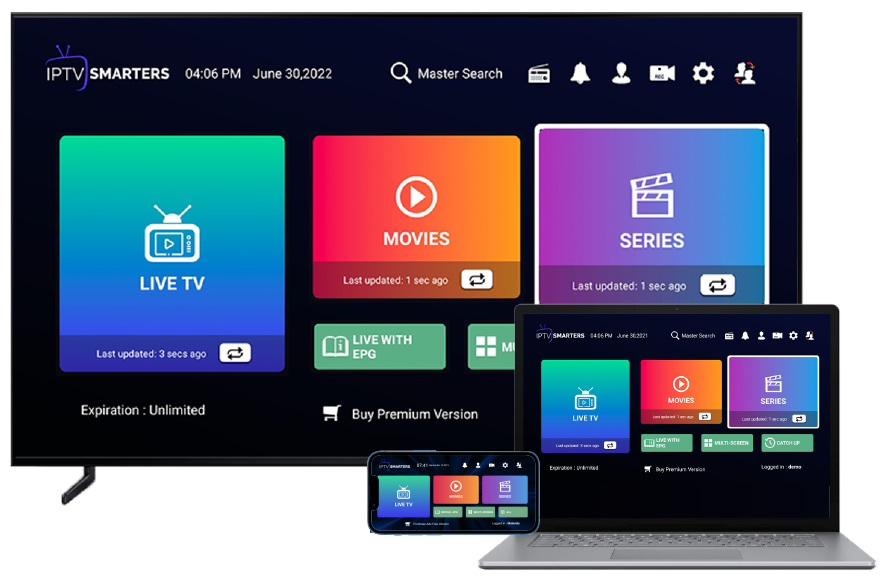Update Your Amusement: Budget-friendly IPTV Subscription Bundles
Update Your Amusement: Budget-friendly IPTV Subscription Bundles
Blog Article
Exactly How IPTV Works: A Step-by-Step Guide to Web Protocol Television Innovation
Internet Procedure Tv (IPTV) has changed the way we consume television material, supplying a new realm of possibilities with the power of the net. From the basic concepts of IPTV to the complicated process of content shipment, each action plays an essential role in ensuring a seamless watching experience.
IPTV Basics
In comprehending IPTV essentials, it is crucial to grasp the fundamental workings of this technology in providing television material online. IPTV, which represents Net Method Television, uses Web Protocol (IP) networks to transmit television web content to customers' tools. Unlike traditional approaches of relaying tv material through cable television or satellite signals, IPTV streams media with high-speed internet connections.
In addition, IPTV enables interactive abilities, such as video as needed (VOD) and digital program guides (EPG), enhancing the individual experience by providing even more control and versatility in accessing content. Overall, understanding the basics of IPTV establishes the foundation for discovering its more advanced capabilities and the benefits it offers to modern-day television consumption.
Material Shipment Process
Reliable content distribution in IPTV systems includes a well-structured procedure that guarantees seamless transmission of tv content over IP networks. The web content delivery procedure in IPTV begins with the development of the video content, which is after that encoded right into digital style appropriate for IP transmission. This inscribed web content is then securely kept on servers referred to as media web servers. When a customer demands specific web content, the IPTV system obtains the asked for data from the media web servers and supplies it to the viewer's tool online.

Middleware Performance
With the combination of middleware, IPTV systems gain improved functionality that improves customer communication and material monitoring. Middleware serves as a critical part that bridges the gap between the customer interface and the back-end infrastructure, facilitating smooth interaction and interaction within the IPTV system. One of the essential functions of middleware in IPTV is to enable tailored customer experiences by offering features such as weblink interactive program overviews, video-on-demand services, interactive advertising and marketing, and individual preferences monitoring. By streamlining these functionalities via middleware, company can provide a more vibrant and tailored IPTV experience to their customers.

Gadget Compatibility
Offered the critical function of middleware in making it possible for smooth communication and web content monitoring in IPTV systems, an essential aspect to consider is the compatibility of devices used for accessing the IPTV services. Tool compatibility is crucial for guaranteeing a smooth individual experience and ideal performance when accessing IPTV content.
In the context of IPTV, device compatibility describes the capacity of a device to effectively interact with the IPTV solution, show content correctly, and sustain the essential methods and codecs for streaming video clip content online. Various tools, such as wise Televisions, set-top boxes, smart devices, tablets, and computers, might have varying levels of compatibility with IPTV solutions.
To guarantee a seamless watching experience, it is necessary for individuals to choose devices that are suitable with the certain IPTV solution they are using. Furthermore, IPTV solution suppliers should use assistance for a large range of gadgets to accommodate the diverse requirements of their user base. By focusing on gadget compatibility, both individuals and solution suppliers can enhance the total IPTV experience.
High Quality of Service (QoS)
Thinking about the essential role of keeping a high standard of performance and dependability in IPTV systems, making sure regular Quality of Service (QoS) continues to be a basic aspect of the user experience. QoS in IPTV refers to the capability of the system to provide material with very little interruptions, high resolution, and quick filling this page times.
Service suppliers utilize QoS systems such as website traffic prioritization, buffering, and mistake improvement to keep a steady IPTV service. By prioritizing IPTV website traffic over much less time-sensitive data, companies can guarantee smooth playback even throughout optimal use hours. Buffering assists compensate for network variations, while mistake continue reading this modification methods enhance information stability.
Continuous tracking and optimization of QoS specifications are necessary to adapt to changing network problems and user needs. Ultimately, a robust QoS framework is essential for providing a seamless and delightful IPTV experience to individuals.
Conclusion
In verdict, IPTV runs via the transmission of tv web content over internet procedure networks. High quality of Solution plays an important duty in preserving the effectiveness and dependability of IPTV services - IPTV subscription.
Report this page